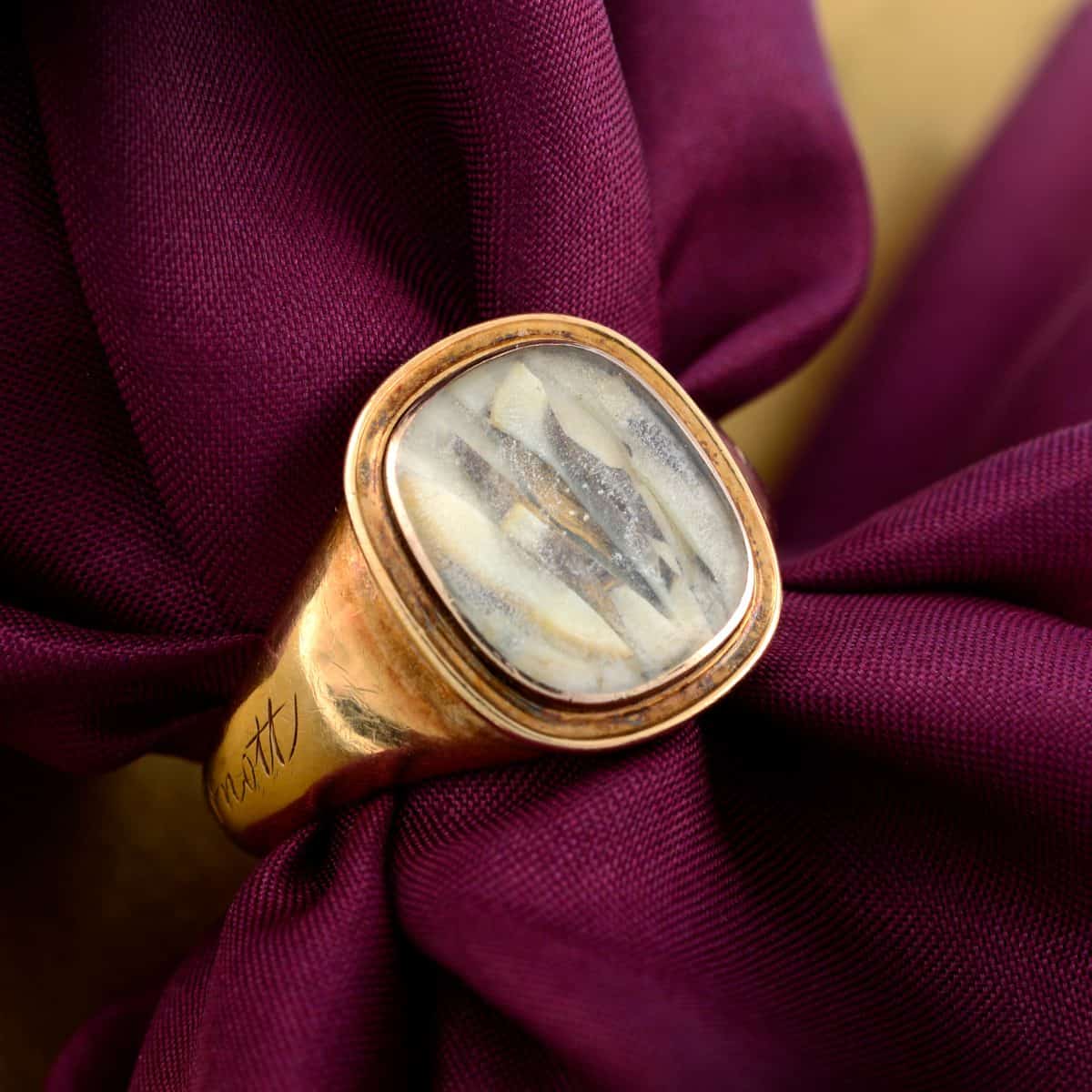Lost Treasure Unearthed: Jeremy Bentham’s Mourning Ring Rediscovered After Almost Two Centuries
Reading Time: 3 minutes
A recent discovery at Fellows Auctioneers, could help pave the way in piecing together a nearly 200-year-old mystery.
Philosopher and spiritual founder of UCL, Jeremy Bentham, left 26 mourning rings behind in his will. These 26 rings have since been scattered across the world, instigating a global treasure hunt. Until now, only a handful of these rings have been uncovered.
However, on the 21st of March, Fellows will be offering a mourning ring, identified as one of these 26, for auction. Dedicated to Jeremy Bentham and bequeathed to Dr Neil Arnott, only whispers of this ring had been heard before. Long accepted to be lost with only traces remaining via Bentham’s will, this ring had remained in the same family for almost 200 years until it came to Fellows. This is the first time that this ring has been publicly identified: another piece of the puzzle has been found.

About Bentham:
Jeremy Bentham lived from 1748 to 1832 and is best known for his development of utilitarianism, a consequentialist ethical theory that judges actions by their outcomes in terms of pleasure and pain. Bentham’s early life was marked by precocious intellectual talent, evident in his enrolment at Oxford University at the age of just 12. He later pursued legal studies and was called to the bar, but his true passion lay in philosophy and social reform.
In addition to his renowned philosophy of utilitarianism, he played a key role in founding University College London (UCL). Bentham’s vision for UCL emphasized practical, secular education accessible to all, regardless of social or religious background. He championed critical thinking and the application of knowledge to societal issues. Though he didn’t live to see its founding, Bentham’s influence shaped UCL’s ethos as a pioneering institution committed to intellectual freedom and social progress.

Bentham’s Death and Mourning Rings:
He passed away on June 6, 1832, at the age of 84. Upon his death, Bentham left specific instructions for the preservation of his body through a process called auto-iconisation. Following his wishes, his body was dissected, embalmed, and dressed in his usual attire. His preserved skeleton was then encased within a wooden frame, topped with a wax head sculpted to resemble him. This auto-icon, as Bentham termed it, was intended to serve as a visual reminder of his ideas and principles. Bentham’s auto-icon was initially kept in a wooden cabinet, but it now resides in a specially designed glass case at UCL.
Among his slightly odd requests for his death, he also commissioned 26 mourning rings. They featured his silhouette and a lock of his hair. These rings have now been scattered around the world, with people hunting to find them! Fellows’ upcoming Fine Jewellery auction will feature one of these rings, once belonging to Dr Neil Arnott.
About Arnott:
Arnott was a renowned doctor and inventor. He studied at the University of Aberdeen before going to London to learn under Sir Everard Home. By the age of 18, he was appointed a full surgeon. He travelled to China with the East India Company where he worked as a surgeon before he settled in London where he practised from 1811 – 1854.
Despite being mostly forgotten for his work as a doctor today, Arnott left his own mark on society. Whilst many may not recognise his name, they would still be familiar with his most famous invention: the waterbed. Arnott originally created it to prevent bedsores in those who were bedbound.
Nicola Whittaker, Business Development at Fellows said:
Jeremy Bentham is remembered in almost equal measure for his passion for social reform, philosophical writings, and his unusual approach to his own mortality. His mourning rings and the search to find out what happened to them has only added to the Bentham legend.
It is an immense privilege to be entrusted to offer this ring for sale for the first time in over 190 years. It had remained in the same family since it was given to Dr Arnott after Bentham’s death in 1832. Being able to shed some light on the mystery of the 26 mourning rings is an honour and we are grateful to the seller for allowing us to be a small part of the legend.

